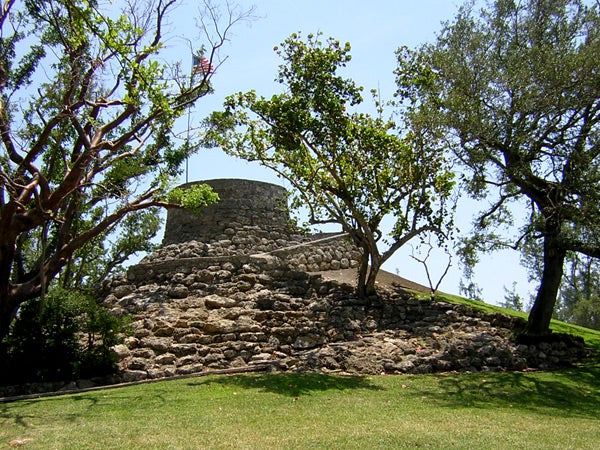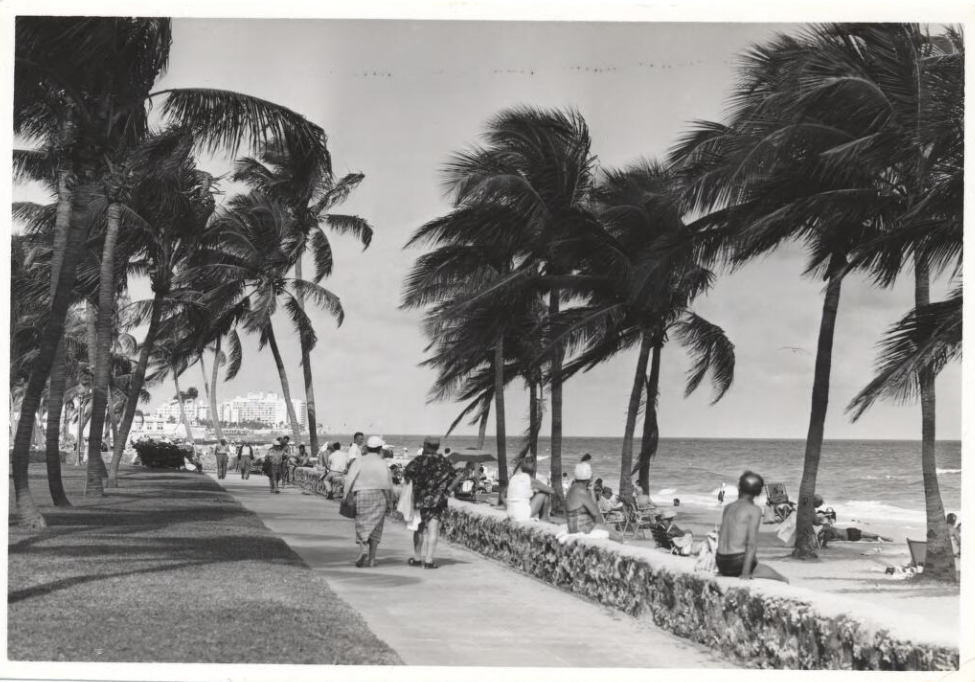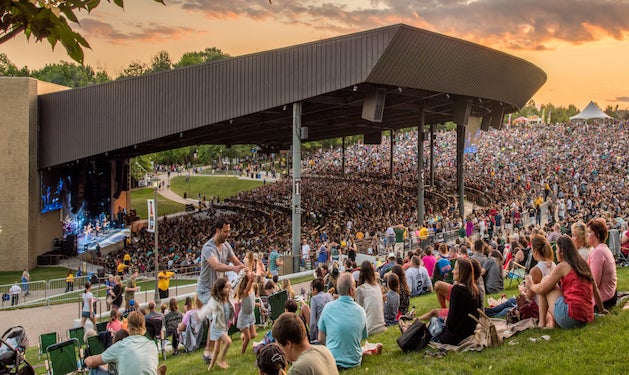Fall Oral History Intern Jarrett Hill sheds some light on the hubs of hippie activity in the Sunshine State.

was once the highest elevation point in Miami-Dade County.
Looking out from the top of the tower, it's possible to glimpse the ocean and overlook much of Miami-Dade County's remaining pine forest. But what remains invisible most of the time is how this limestone outcropping once stood as a beacon for the Southern counterculture of the 1960s. Greynolds Park in Miami, Florida, began its modern life as a quarry and landfill site and was once the highest point in Miami-Dade County. Today it is primarily a quiet, innocuous public space. [1] However, once a year, Miami residents and visitors gather at Greynolds Park to pay tribute to the "love-ins" of the late '60s and remember how "the mound" (topped with an old limestone tower remnant from its quarry days) was one of few places that counterculture flourished in the conservative South of the time.
In the early 1960s, hippie culture and student-led countercultural movements proliferated in the Northeast and West Coast. However, "flower children" were hard to find in the South. Negative news reporting and fear-mongering about hippies and their debauched lifestyles far outsized the small contingents of the counterculture that survived in the region. This hostility towards hippies focused primarily on their long hair, drug use, and "unpatriotic" draft resistance. As Woodstock organizer Michael Lang later recounted, traveling through the South with long hair, he could feel the eyes of every close-cropped man and God-fearing woman on him. [2] With this social atmosphere, how did counterculture spring up with such force in Miami?

For many Floridians, Miami is known as a city with a distinct culture and mindset from the rest of the state. Particularly from the 1960's onward, Miami became a gateway for immigration and has had an ever-diversifying population with even more diverse viewpoints. In addition, Miami rose in popularity as a travel destination in the mid-20th century and soon became a premiere vacation site for Northeasterners, who brought with them ideas that had difficulty diffusing organically in the conservative social atmosphere. [3] For these reasons, Miami was able to develop as a countercultural center in the South, with Greynolds Park (part of the laid-back neighborhood of Coconut Grove) as its beating heart. As Miami Beach resident Zona Horten recounts, "The Grove" was the premiere location for her and her friends to go when skipping high school math class. They rolled down the Greynolds hill and hung out by the water—all to the sound of peace preachers and the musical hopefuls who came to play free shows. [4]

focus on the warm air, ocean breeze, and relaxing environment.
Coconut Grove's embrace of hippie culture expanded significantly with the construction of music venues The World and its successor Thee Image. These were two of only three dedicated psychedelic rock venues in the entire South, with the third being a single venue in Austin, Texas. [5]
As the second half of the '60s began, faces familiar to the 1969 Woodstock Festival popped up in Coconut Grove. Michael Lang, one of the primary organizers behind Woodstock, came to Miami to open a head shop, eventually connecting enough with the Miami counterculture that he saw the city as the perfect place for his "1968 Pop and Underground Festival", known better today as one of two 1968 events called the "Miami Pop Festival."
Countercultural figures such as Jimi Hendrix, Country Joe McDonald, and Sweetwater visited and performed in the area in the years leading up to their canonization at Woodstock. Since the end of the '60s, Coconut Grove has continued to draw countercultural figures of the era, with Richie Havens and Jefferson Starship both performing there. [6]
One event in Miami predated Woodstock or Miami Pop, signaling to the city that the "flower children" of Coconut Grove were there to stay. On April 14th, 1968—Easter Sunday— the Grateful Dead performed on "the mound" of Greynolds Park, with 3,000 hippies converging to hear them preach. This early 1968 "love-in" was not the first of its kind in Florida (that is generally accepted as being the 1967 Palm Beach "love-in"). However, it was one of the largest turnouts for a psychedelic rock and Vietnam protest event in the state's history. [7] Under the warmth of the Florida sun, Greynolds Park became a spectacle of hippie fashion– golden robes, long hair, and even some attendees wearing burlap sacks. The humor of the date was not lost on attendees, with one man telling reporters: "It's just like church– some people come because they believe, and some people just want to show off their clothes!" [8]
While many news outlets spread fear about hippies and the supposed crime they would bring to Miami, video from this event and its 1969 reprise shows that even leaders of what would later be dubbed the "silent majority" could not find fault in the Miami hippies' peaceful actions. One police chief, speaking to the masses of young people at the love-in, proclaimed, "The eyes of the world are upon you… [so, help us understand] why we can't bridge this generational gap." His attention then turned to the press, stating, "There's no problem, and there's no cause for a problem [here in Miami]!" [9]
While difficult years followed the close of the 1960's, and the hippies that once claimed Greynolds Park as their own slowly stopped visiting, this legacy does not lie dormant. Invisible for the rest of the year, former and current residents of Coconut Grove flock back to the park each year to remind the rest of Miami that once, not so long ago, their neighborhood challenged the rest of the South with good times and free music.
[1] Corry, “Greynolds Park Love-in, North Miami Beach, FL April 14, 1968 Grateful Dead/Blues Image,” December 11, 2011. http://lostlivedead.blogspot.com/2009/12/greynolds-park-love-in-north-m….
[2] Kleinman, “Miami was a hippie hangout?” December 29, 2021. https://www.miamiherald.com/news/local/article256869447.html
[3] “Greynolds Park: Flashback Miami,” Greynolds Park | Flashback Miami. Accessed October 10, 2022. https://flashbackmiami.com/2015/01/07/greynolds-park/.
[4] Lang, Michael and Holly George-Warren, The Road to Woodstock (New York: Ecco, 2009).
[5] Corry, “Greynolds Park Love-in, North Miami Beach, FL April 14, 1968 Grateful Dead/Blues Image,” December 11, 2011. http://lostlivedead.blogspot.com/2009/12/greynolds-park-love-in-north-m….
[6] Kleinman, “Miami was a hippie hangout?” December 29, 2021. https://www.miamiherald.com/news/local/article256869447.html
[7] “History: Florida's First Hippie Love-in Was in Lantana?” The Palm Beach Post. Palm Beach Post, October 2, 2019. https://www.palmbeachpost.com/story/news/local/2019/10/02/history-flori….
[8] “Hippies Stage Love-In at Miami, Fla.,” Colorado Springs Gazette, April 15, 1968.
